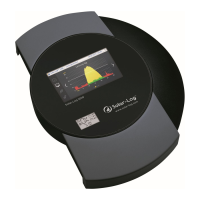
 Loading...
Loading...
Do you have a question about the Solar-Log 2000 and is the answer not in the manual?
| Device Type | Data Logger |
|---|---|
| Max Inverters | 100 |
| Power Supply | 24 V DC |
| Remote Monitoring | Yes |
| Ethernet interface | Yes |
| Communication Interfaces | RS485, Ethernet |
| Protocols | Modbus |
| Data Storage | Internal |
Details the two classes of risk identified in safety instructions: Danger and Caution.
Details the procedure for safely switching off inverters before making connections.
Covers connecting external power meters via S0 input or RS485 bus for various applications.
Details connecting the Solar-Log™ to a network or PC using Ethernet and other technologies.
Covers the initial setup requirements and easy installation process for Solar-Log 250 and 300.
Explains the initial configuration process for the Solar-Log 1200 via touch display or web menu.
Guides through setting up the Solar-Log™ using the configuration wizard for initial settings.
Covers network settings including Ethernet, GPRS, WiFi, and Proxy configurations.
Covers settings for Internet access, portal configuration, email, SMS, export, and backup.
Guides on defining, detecting, and configuring PV plant components connected to Solar-Log™.
Covers configuring different types of notifications like recipient, device, yield, alarm, and power/failure.
Explains defining and configuring switches for Smart Energy function, including groups and surplus management.
Details implementing grid operator requirements for active and reactive power control.
Covers various modes for active power reduction like deactivated, remote controlled, and fixed reduction.
Covers reactive power control modes like fixed value cos (Phi) and variable cos (Phi).
Covers basic system settings like access control, language, display, licenses, and firmware.
Provides tools for diagnosing inverters, including details, tracker, and module field comparison.
Explains how to access and analyze inverter control and power reduction settings.
Provides access to Smart Energy status, history, and simulation features.
Allows selection of graphic displays for plant production, including day, month, year, and total views.
Covers device settings including start menu, basic settings, USB, and advanced settings.
Covers restarting the device and restoring factory settings via reset buttons or web menu.
Lists fault messages for GPRS, time, WiFi, Internet, export, email, portal, and feed-in management.